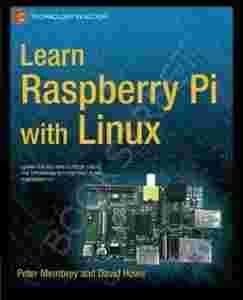Learn Raspberry Pi with Linux will
tell you everything you need to know about the Raspberry
Pi's GUI and command line so you can get started doing
amazing things. You'll learn how to set up your new
Raspberry Pi with a monitor, keyboard and mouse, and
you'll discover that what may look unfamiliar in Linux
is really very familiar. You'll find out how to connect
to the internet, change your desktop settings, and
you'll get a tour of installed
applications.
Next, you'll take your first steps
toward being a Raspberry Pi expert by learning how to
get around at the Linux command line. You'll learn about
different shells, including the bash shell, and commands
that will make you a true power user.
Finally,
you'll learn how to create your first Raspberry Pi
projects:
- Making a Pi web server: run LAMP on your own
network
- Making your Pi wireless: remove all the cables
and retain all the functionality
- Making a Raspberry Pi-based security cam
and messenger service: find out who's dropping by
- Making a Pi media center: stream videos and
music from your Pi
Raspberry Pi is awesome,
and it's Linux. And it's awesome because it's Linux. But
if you've never used Linux or worked at the Linux
command line before, it can be a bit daunting. Raspberry
Pi is an amazing little computer with tons of potential.
And
Learn Raspberry Pi with Linux can be
your first step in unlocking that potential.
What you’ll learn
- How to get online with Raspberry Pi
- How to customize your Pi's desktop environment
- Essential commands for putting your Pi to work
- Basic network services - the power behind what Pi
can do
- How to make your Pi totally wireless by removing
all the cables
- How to turn your Pi into your own personal web
server
- How to turn your Pi into a spy
- How to turn your Pi into a media center
Who this book is for
Raspberry Pi users who
are new to Linux and the Linux command line.
Table of Contents
1: Your First Bite of
Raspberry Pi 2: Surveying the Landscape
3: Getting
Comfortable 4: The File-Paths to Success 5: Essential
Commands 6: Editing Files on the Command Line 7:
Managing Your Pi
8: A LAMP of Your Own
9: WiPi:
Wireless Computing 10: The Raspberry sPi
11: Pi Media
Center

